Are you looking for effective win-back email examples to reconnect with lost customers and revive dormant subscribers?
In relationships, there’s often talk of “the one that got away.” In the world of eCommerce, however, the sting is a bit different. It’s about the customers you’ve spent time and energy nurturing, only to watch as they drift away from your store.
Similarly, new subscribers initially show great enthusiasm for your blog or email newsletters, but their interest can wane over time.
But what if you could turn this around? What if you could re-engage those who have drifted away? You’re lucky because an intelligently crafted win-back email campaign can dramatically reduce that unsettling churn rate.
Our ultimate guide to win-back emails will cover all the essentials you need to craft an impactful win-back email campaign. Plus, we’ll provide some standout win-back email examples to help you re-engage those inactive customers and breathe new life into your subscriber list.
- What Is a Win-Back Email?
- The Who, Why, & When of Win-Back Emails
- Best Practices for Win-Back Campaigns
- How to Send Win-Back Emails (Software & Integrations)
- 10 Brilliant Win-Back Email Examples
What Is a Win-Back Email?
A win-back email is a targeted marketing message sent to past customers or subscribers who have disengaged or stopped interacting with a brand for a significant period. The primary goal of a win-back email is to rekindle the relationship and encourage these individuals to return and engage with the brand’s products, services, or content.
These emails typically acknowledge the lapse in the relationship and often include incentives like special offers, discounts, or personalized messages to entice the recipient to re-engage.
Win-back emails are essential to customer retention strategies, as they help businesses recover potentially lost revenue and maintain a more stable customer base.
By effectively using win-back emails, companies can demonstrate their value and relevance to lapsed customers, increasing the chances of them returning as active, engaged users.
What is a Win BackA win back is an inactive customer who starts to purchase from you again because of a targeted marketing effort.
For example, let’s talk about what happens when you look at a product on a big eCommerce site like Target, put it in your cart, but decide not to go through with the purchase.
You may forget about it, but Target doesn’t.
A couple of weeks after I abandoned a cart on Target’s website, I received this email:
Target sends an email any time an item in your cart has gone on sale. This win-back email does 2 things:
- It reminds you about the product you were interested in
- It lets you know it’s now on sale. That lower price may seal the deal.
Abandoned cart recovery is just 1 of the many possible goals for win-back emails. Also, the effort to re-engage a customer often takes more than a single message.
Win-Back Email Campaigns
Most emails like the one above are part of larger win-back campaigns. An email marketing campaign includes multiple emails that are timed and targeted to encourage interaction.
In fact, that wasn’t the only email I received from Target about that specific product. I had already received a simple reminder email a few days after I had looked at that item.
Plus, many online shops will send email notifications whenever an item in your cart is low in stock.
The best win-back email campaigns include multiple reminders and follow-ups. However, they should be timed to be helpful to your customer, rather than annoying.
The Who, Why & When of Win-Back Emails
Before we can dig into why and when to send win-back emails, first you need to know who you’re sending them to. After all, you have to understand your audience before you can appeal to them successfully.
Who Is Your Audience for Win-Back Emails?
If you’re an online merchant, you probably know about “lapsed customers.” However, most people don’t know that this term can actually refer to two types of customers:
- Those who previously bought something from your site but haven’t come back for subsequent purchases.
- Those who have made no purchases and have stopped interacting with your emails.
But what if your business doesn’t rely on paying customers? After all, many blogs and publishers make money through ad revenue and affiliate marketing.
When your newsletter subscribers stop opening emails and engaging with your content, you lose website traffic and revenue.
In this article, when we talk about a “lapsed customer,” we mean:
Someone who has purchased from you and/or engaged with your content in the past but are now inactive.
Why Customers Stop Buying & Engaging
If you want to get people back, you need to understand why they left in the first place.
When it comes to why customers decide to ghost you, there can be many reasons, only some of which you can control:
- They were only interested in one of your products, perhaps as a gift
- They were “just browsing” and had no intention of becoming a customer
- They subscribed to your email list just to get a lead magnet
- Your emails are different than they expected
- Your prices are higher than the customer wants to pay
- Your emails get lost in their active inboxes
Whatever the reason, know that you’re not alone! For instance, the median churn rate for B2B companies in 2022 ranged from 11% to 56%, depending on the industry.
Lapsed customers are a part of doing business, but working to retain them is crucial to long-term success.
Why You Need to Win Lapsed Customers Back
You already invested time and resources in converting your customers and subscribers. And it takes less money to retain them than it does to replace them.
According to the Harvard Business Review, acquiring a new customer costs between 5 and 25 times more than keeping an existing one.
Also, repeat customers spend an average of 67% more than new customers.
That’s why your win-back emails are absolutely vital parts of your email marketing strategy. The more customers you retain, the more money you’ll make and the more money you’ll save.
When to Send Re-Engagement Emails
Our email inboxes can become overwhelming, and many users will be quick to click “unsubscribe” if they find your emails annoying or intrusive.
To avoid this problem, you should schedule your win-back campaigns for when customers are most likely to want to hear from you. Here are a few sample scenarios:
- If a new subscriber doesn’t open any emails in their first 1-3 months, a strong incentive might get them to click. They signed up for a reason, so a win-back email might remind them!
- For established subscribers, decide when you consider them to be inactive. For many lists, the trigger for a welcome-back campaign is 6 months of no email opens. You want to re-engage users while they still remember your brand, but not so quickly that it feels nagging.
- Abandoned cart emails should go out within a few days of the customer adding the product. You want to remind them while it’s still fresh on their mind and before they a similar item elsewhere.
- Shoppers want to know when items they’ve shown interest in go on sale or are low in stock. Customers often delay purchases due to price or simply because there’s no hurry. They want to know when the price drops or if the product will soon be unavailable.
Best Practices for Win-Back Campaigns
Since each re-engagement campaign’s goal is a little different, no 2 will look exactly alike. But the best win-back emails include some common components.
An Automated Workflow
A win-back email sequence is usually scheduled through email marketing automation. You don’t manually send out most customer retention emails. Instead, you set up different triggers and timing for your campaign, and then your email marketing service takes care of the rest.
This is called an automated workflow.
Here’s an example of a very basic win-back workflow:
A Solid Structure (with the Right Number of Emails)
Just how many win-back emails should you send to your disengaged customers and subscribers?
Your exact number will depend on a lot of factors. For instance, if you have a longer sales cycle or sell high-ticket items, you might send as many as 8 or 9 emails to inactive subscribers.
However, most win-back campaigns should include 4-5 emails.
These emails should be structured in a way that makes sense and nurtures the subscriber toward engagement. Here is an example of a smart way to structure your campaign:
Let’s take a quick look at each.
Reminder: This first email is simply a friendly “hello” to put you back on your subscriber’s mind. People have busy lives, but sometimes a little nudge is all it takes to put you on someone’s radar.
Incentive: If your reminder didn’t prompt your subscriber to reengage with you, then a small, ethical bribe (called lead magnets) may do the trick. Offer your customers a discount on your product, a 2-for-1 deal, or some kind of special content (an eBook, an infographic, etc.).
Last Chance: This email lets users know they have one more chance to engage with you before losing something. That something may be a limited-time offer or their email subscription itself. You might let customers know that a special deal is about to expire in order to create a sense of urgency.
Goodbye: The “goodbye” email is your last-ditch, hail-mary effort. Here, you’re simply informing customers that you’ll be removing them from your email list (you could even give them a specific time frame such as, “within the next 30 days”).
Note that even in the goodbye email, you still give your customers the option to click through to your site because your goal is to bring them back.
Also keep in mind that the goodbye email offers another opportunity to engage customers: asking for feedback. You can simply ask your customers why they didn’t interact with your site and how you can improve your content or product to serve them better in the future, as in this B2B win-back campaign:
When you’ve gone through the entire email campaign and still had no response, that means it’s time to purge.
Remember, you don’t want to have too many inactive users or you’ll be penalized by email providers. High open rates can get you in your audience’s inbox; low open rates can get you sunk in the spam folder.
Related ContentYou may also want to check out this article for more B2B lead generation strategies or this helpful post with 5 B2B email best practices.
But before moving on to our favorite win back email examples, here are three other best practices to keep in mind for your campaign:
Great Subject Lines
The right subject line can be the difference between high, low, and no open rates. This is the first impression your reader will have and it will make or break you.
There are 2 types of win-back email subject lines:
- A subject line that is clearly trying to win the customer back. These include words like “We miss you” or “Come back.”
- A subject line that entices users to open without specifically telling them they’ve been inactive.
Here’s a subject line from Walgreens that leads with “Come back”:
This Walgreens email is obviously part of a re-engagment campaign.
But win-back emails can also be more subtle, especially during the incentive stage. The emails below might just be regular promotional emails, but they would also be useful in a win-back campaign.
Either way, you should optimize your subject lines to encourage subscribers to open.
Want to learn more? Follow our guidelines here:
15 Best Practices for Email Subject Lines That Can Boost Open Rates
Clean, Clear, and Concise Copy With a Call-to-Action
If people aren’t engaging with your brand in the first place, they’re unlikely to sit down and a long-winded email. Keep all your email content short and lighthearted.
That copy should drive your reader to a clear call to action (CTA).
Your CTA could be a confirmation that they still want your emails, or it could be a link to a coupon or discount code, blog post, or product page.
Personalization
The best win-back emails are personalized to each subscriber. There are several ways to accomplish this:
- Use personalization tags to include the customer’s first name in the subject line and/or email body
- Feature products in the customer’s cart
- Suggest products similar to previous purchases
- Suggest blog posts and content related to the user’s interests
Related ContentWant to learn more about personalization? Take a look at our guide to eCommerce personalization!
How to Send Win-Back Emails (Software & Integrations)
Next, let’s take a quick look at the technical side of sending win-back campaigns. The exact process will vary depending on the software and integrations you use, but here’s an overview of how it works.
Subscribers Who Aren’t Opening Your Emails
First, we’ll discuss how to target those email subscribers who haven’t been opening your messages.
Fortunately, most email marketing platforms like Constant Contact make it easy to:
- Identify inactive users
- Segment your audience
- Automate a targeted email campaign to users who have stopped opening your emails
You can create custom segments based on your business’s definition of an inactive subscriber. To save you time, Constant Contact offers pre-built segments based on your subscribers’ level of engagement.
Your email service should also offer plenty of options for automating those emails. You’ll be able to create your email series and determine how to trigger that series to start.
Customers Who Have Abandoned a Cart or Lapsed
When choosing an email marketing service, make sure it integrates with the eCommerce platform you use for your online store. With seamless integration, you’ll be able to use customer behavior to trigger your win-back email campaigns.
Constant Contact, for instance, integrates with eCommerce platforms such as Shopify and WooCommerce.
Once your software is integrated, it’ll be a snap to schedule those abandoned cart email campaigns.
We’ve used Constant Contact as our example, but most email marketing services offer some level of segmentation, automation, and eCommerce integration.
To get started with your win-back emails, dig through your software’s documentation to find the right tutorials and guides.
10 Win-Back Email Examples
Here are 10 win-back email examples you can look at and take inspiration from.
1. The Bakerista
A simple, classy, and visually appealing win-back email example. It demonstrates that even brick-and-mortar stores can send win-back email campaigns.
2. West Elm
What if a former customer has been browsing your site but hasn’t made a purchase in a while? Send a win-back email like this one from the furniture store West Elm. This one features a product I’d recently looked at, as well as a section of suggested items.
3. Grammarly
Here’s a gamified win-back email example from the SaaS Grammarly. If a user has signed up for your software but isn’t using it, try to re-engage them.
After all, if users aren’t using your free version, they definitely won’t upgrade to a paid plan. And if they’re not using their paid plan, they’re likely to cancel.
4. Chewy
Chewy’s email features a fun pun and an irresistible photo.
Bonus tip: Chewy uses another pet pun in this email’s subject line: “We Noticed a Paws. Come Back and Shop.” Humor is a smart way to improve your open rates.
5. Birchbox
Birchbox doesn’t try to hide the fact that they’re trying to win customers back. The coupon code includes “COMEBACK.”
6. Lands’ End
Land’s End’s win-back email example offers a polite tap on the shoulder. This email is targeted to subscribers who haven’t been opening their emails. It reminds customers of what they’re missing out on. It also gives them a chance to modify their preferences for future emails.
Bonus Tip: Learn how to use the power of FOMO (fear of missing out) throughout your digital marketing strategy.
7. Costco
A “Last Chance” email is an important part of your win-back email workflow. In this win-back email example from Costco, the retailer give subscribers a final opportunity to catch a great deal.
8. Zylker
Charming graphics make this goodbye email a fun win-back email example to look at as it is to read. Maybe we’ll stick around a while longer…
9. Nordstrom
One of the most straightforward win-back email examples on our list, this goodbye email from Nordstrom is full of calls-to-action, giving users little choice but to click.
10. Mercari
Selling platform Mercari sends win-back emails to sellers who haven’t posted any new listings recently. This win-back email example offers an incentive of extra cash on their next sale. The friendly text is welcoming, rather than pushy.
Your Re-engagement Campaign Worked. Now What?
The point of a win-back email series is to get your inactive users active again. For eCommerce businesses, that means 1 thing:
Getting them back onto your site.
However, your win-back strategy should continue on your website. After all, just because a user is on your site doesn’t mean they’ll buy anything. What you need next is a powerful conversion tool.
That’s where OptinMonster, the most powerful conversion optimization tool in the world, comes in.
Once your lapsed customer comes back to your site, OptinMonster can handle the rest to make sure they don’t leave without making a purchase. How?
Loads of ways! Here are just a few:
Lightbox popup (with Exit-Intent® technology): When a user is about to leave your site, they get a popup that pulls their attention back to your product.
Floating bars: Always keep your call-to-action in view with a floating bar on the page, so your users can quickly make a purchase or signup for an account.
Scroll triggers: You can show your visitors a popup after they’ve scrolled through a percentage of the page. This allows you to match products with readers who are actively expressing interest in your brand.
So let’s say your readers get through 50% of a specific webpage, they would then see a slide-in that looks something like this:
As we said, these are just a few of the ways OptinMonster can lead to higher conversion rates and more sales. You can check out the full list of OptinMonster’s features here.
By following our ultimate guide to win-back emails, you’ll be well-prepared to launch an effective re-engagement campaign of your own.
And remember, if you want to convert more of your website visitors into subscribers and customers, OptinMonster is the tool for you.

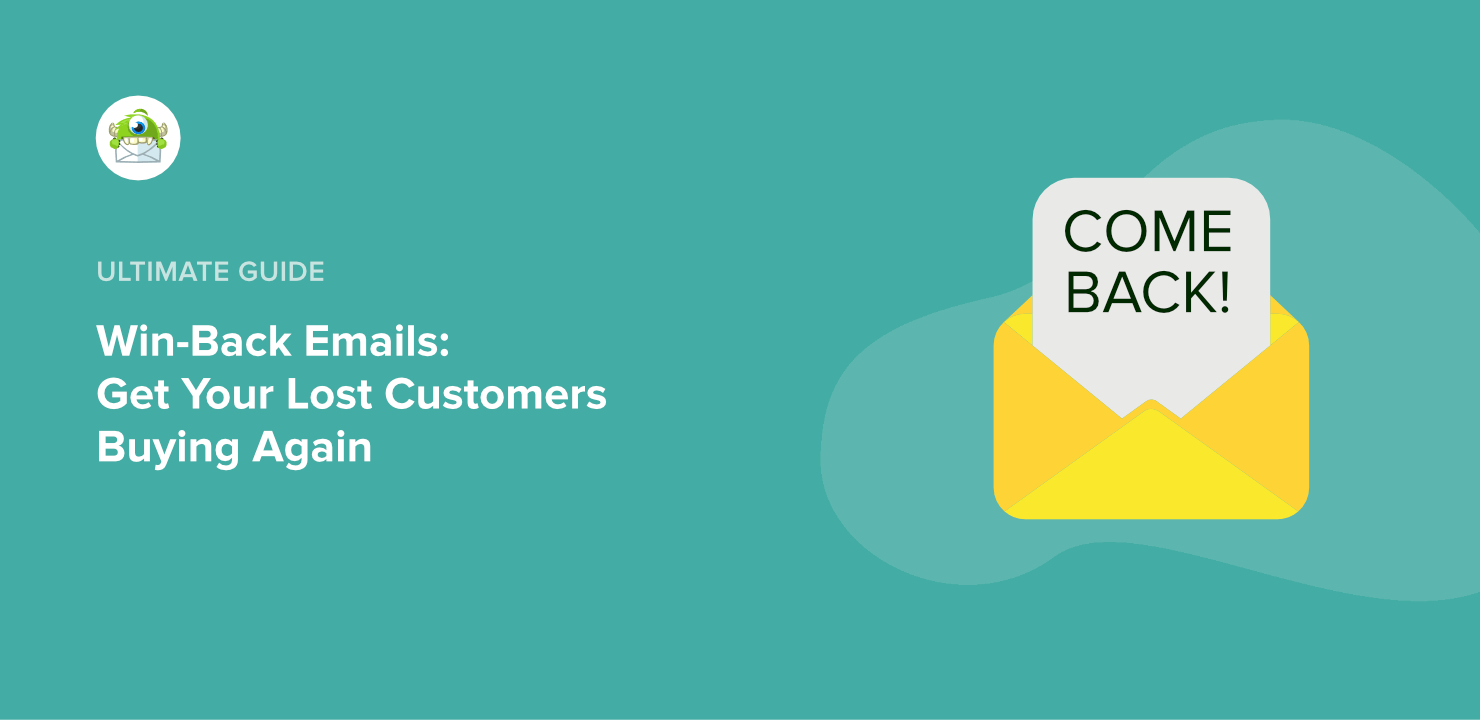
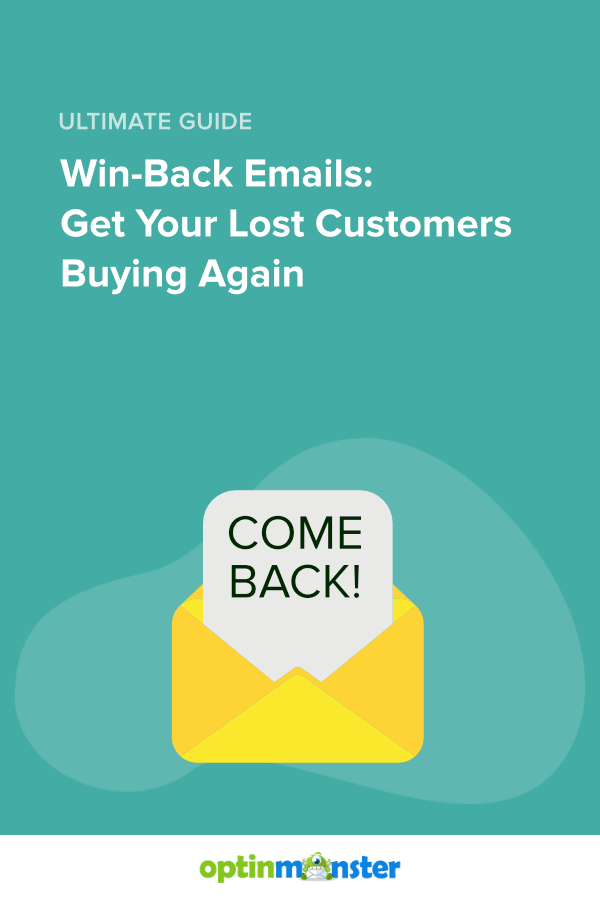
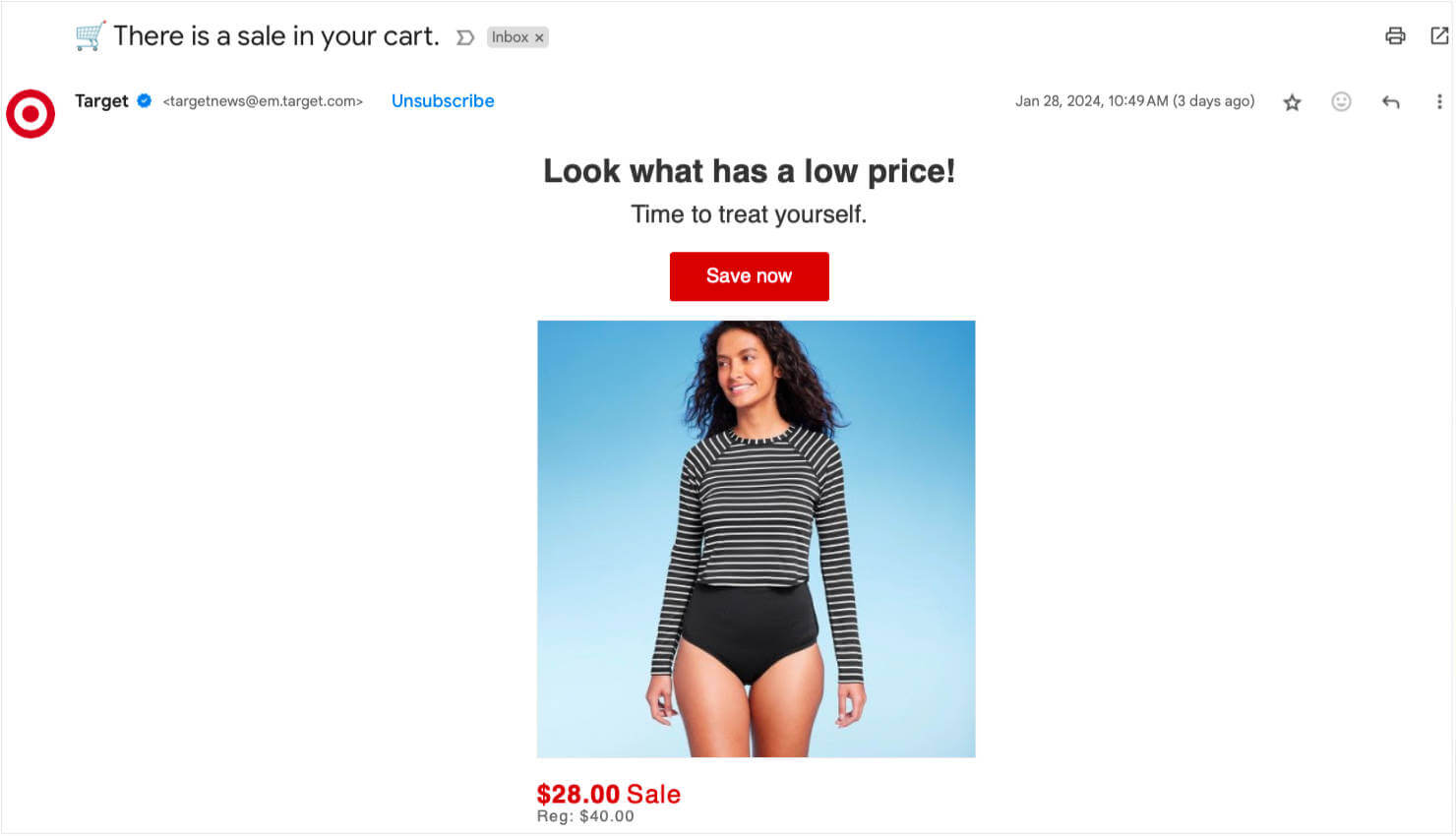
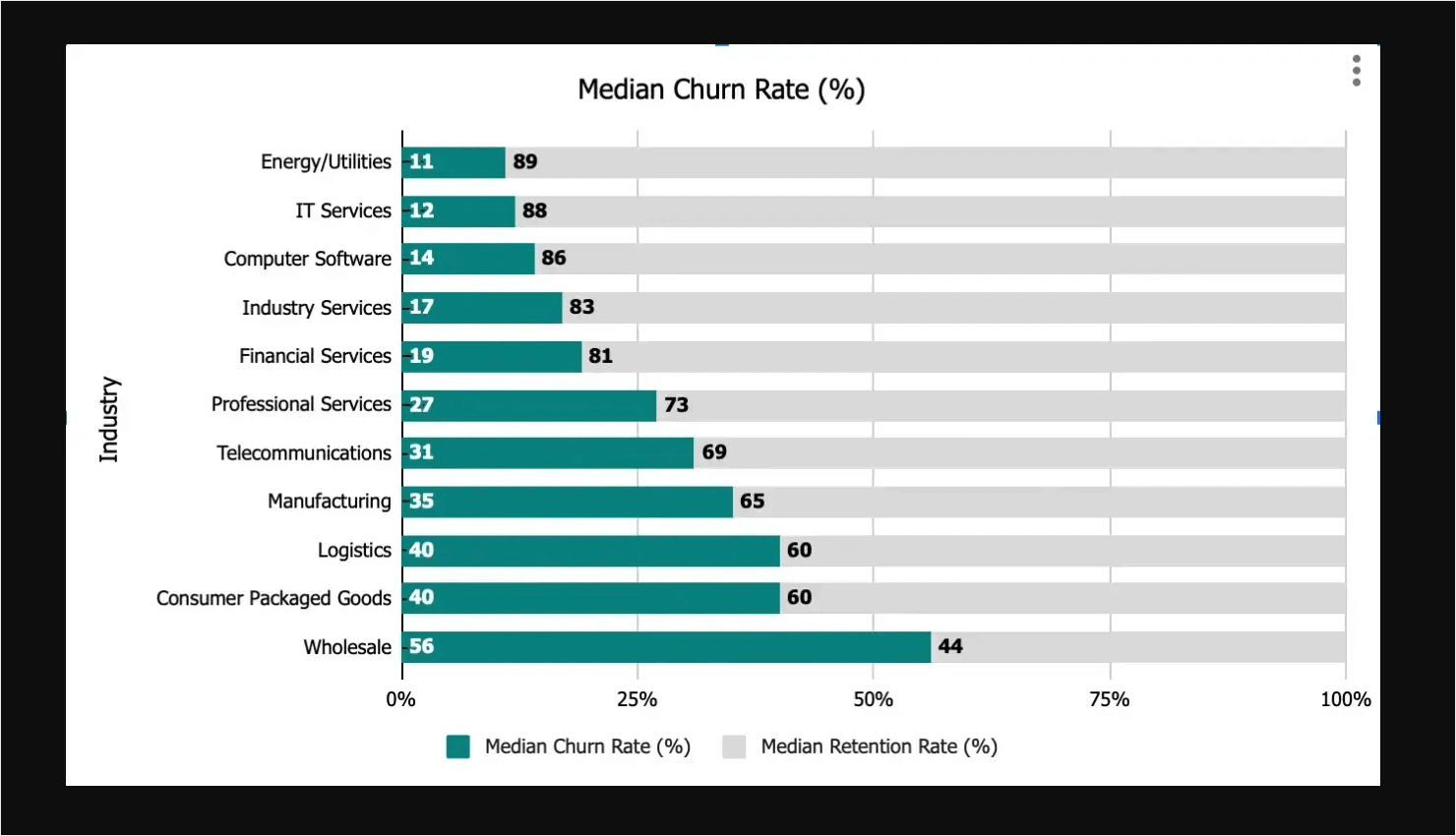
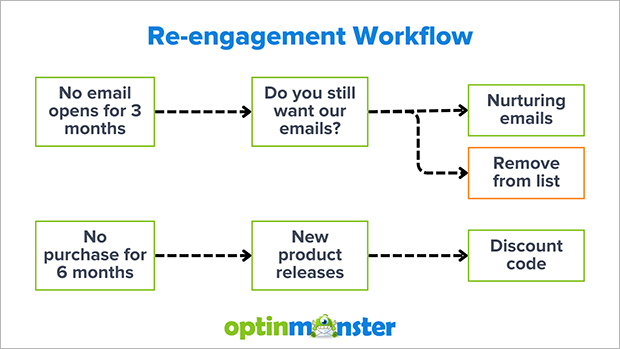
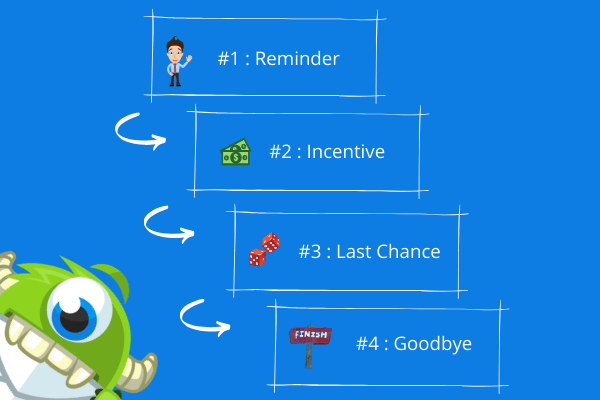
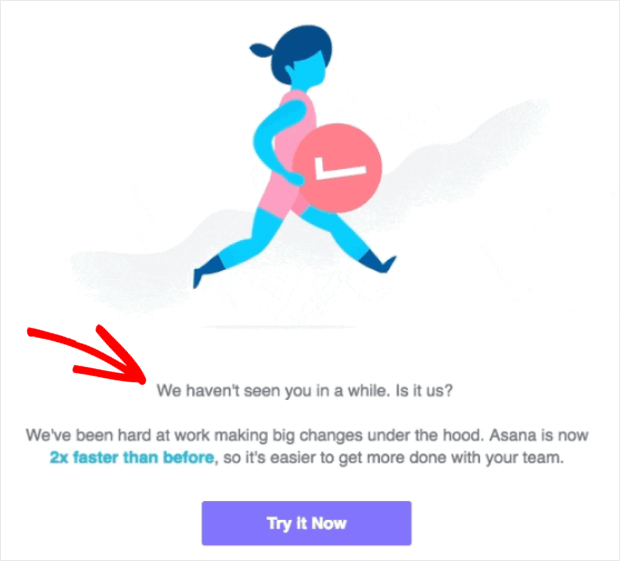
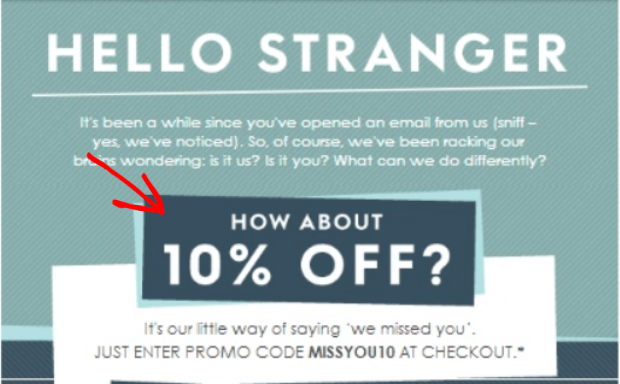

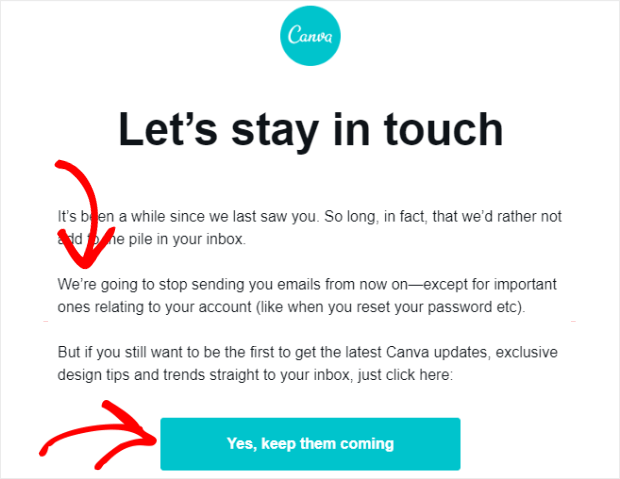
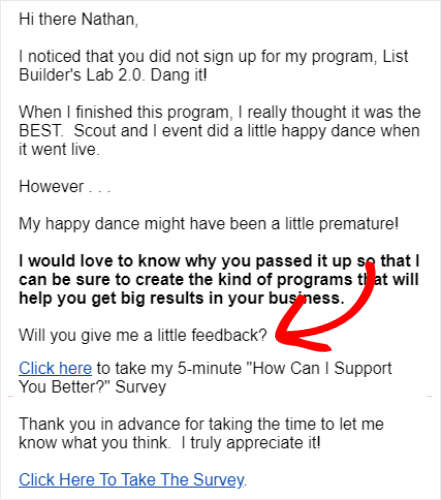

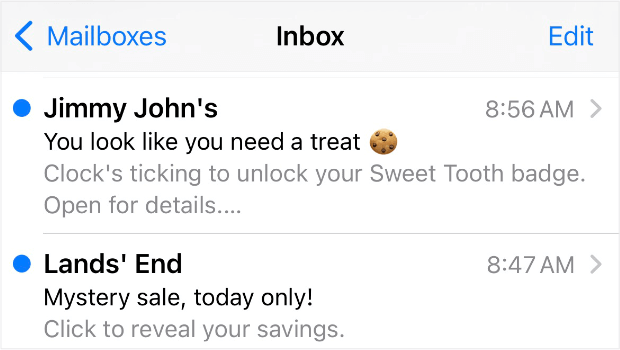
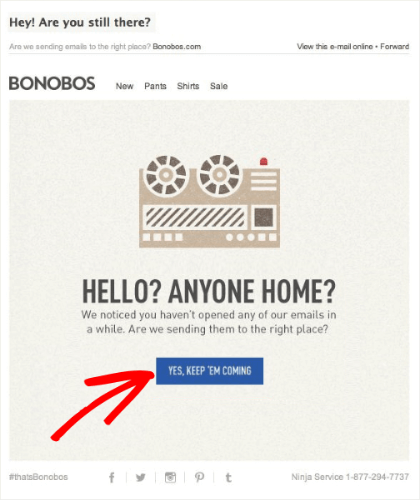
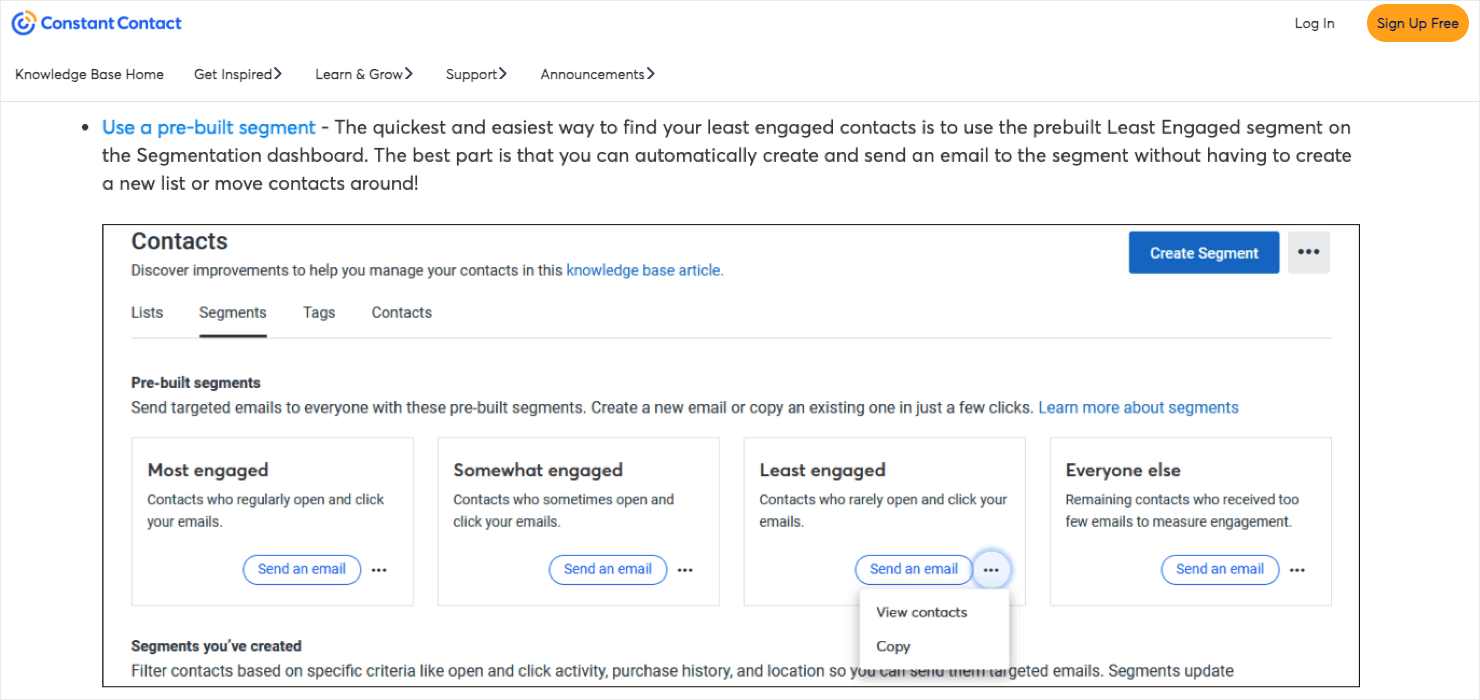

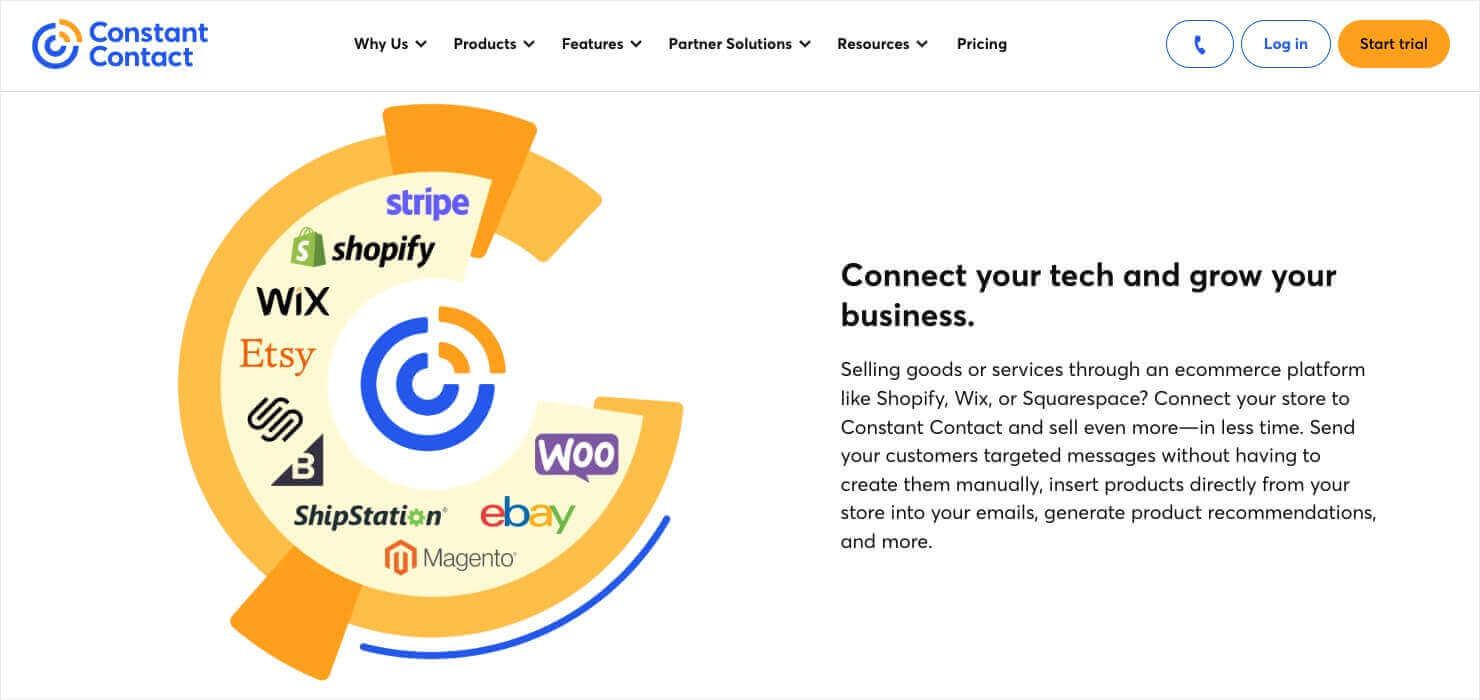

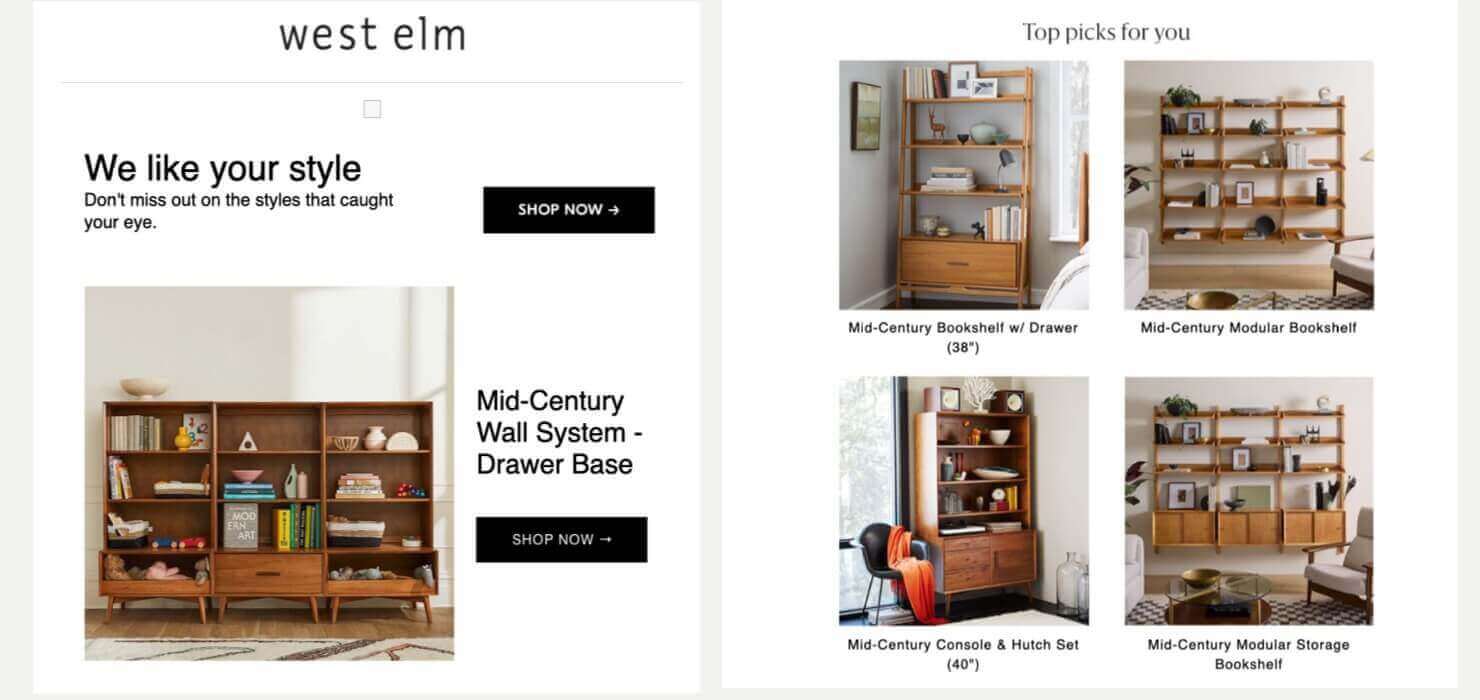
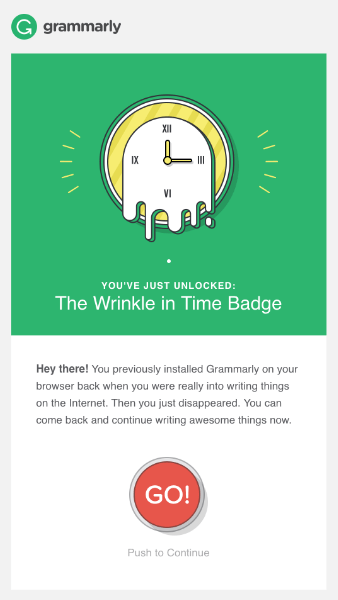
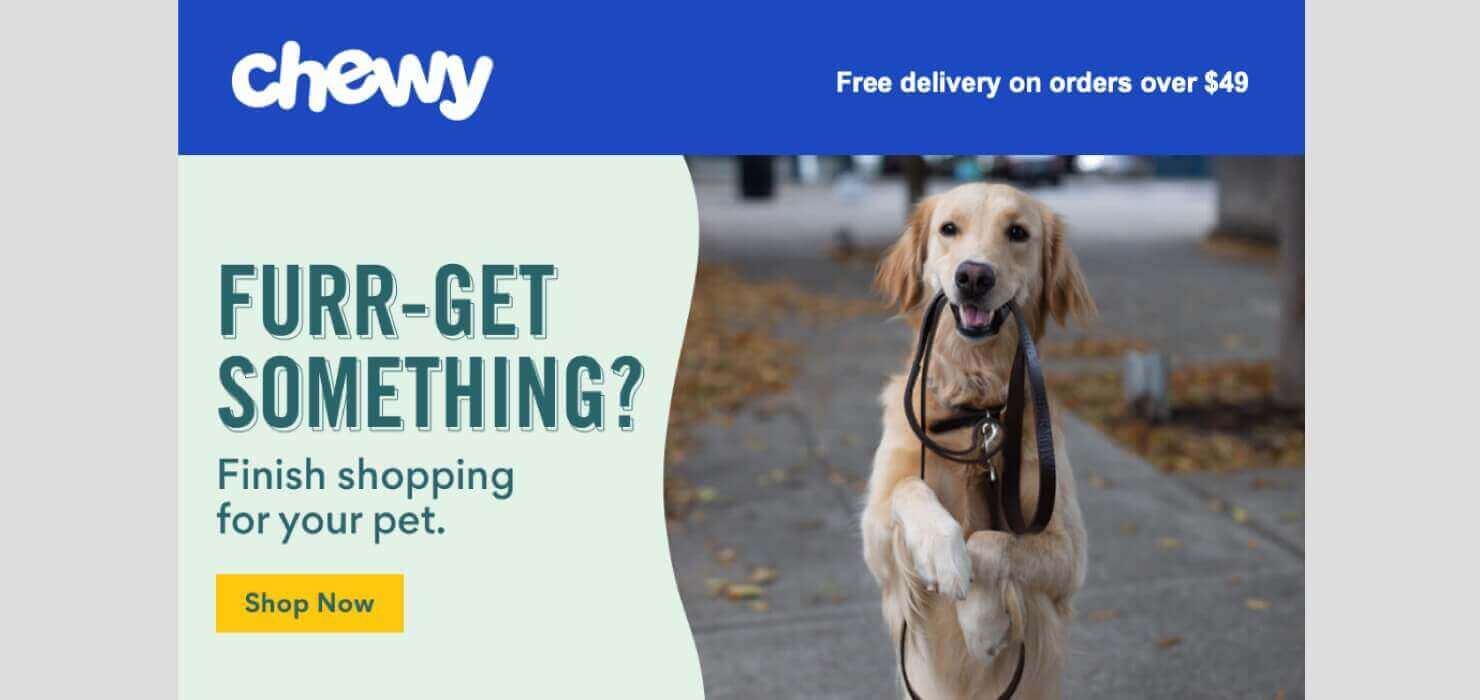
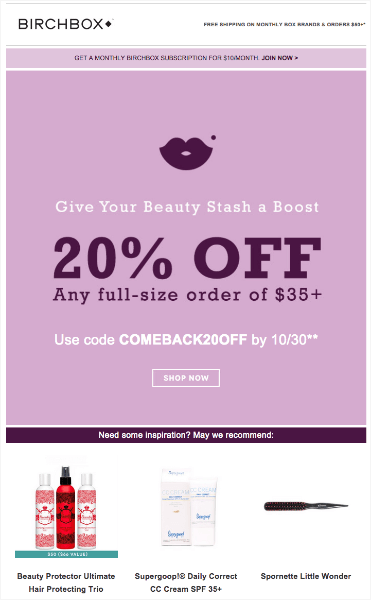
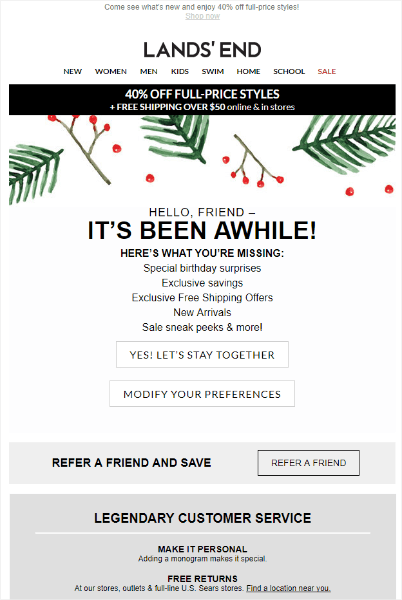
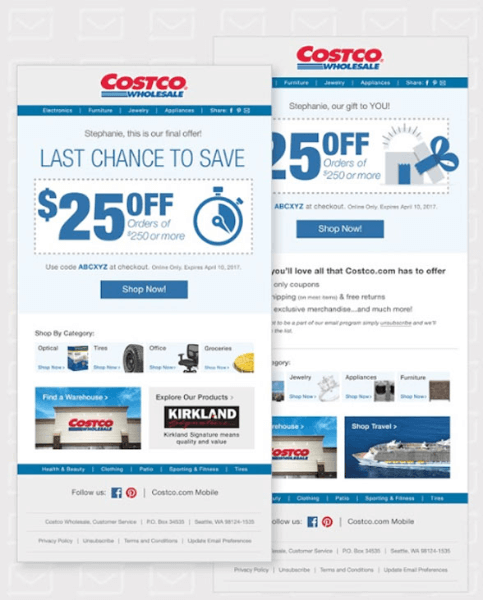
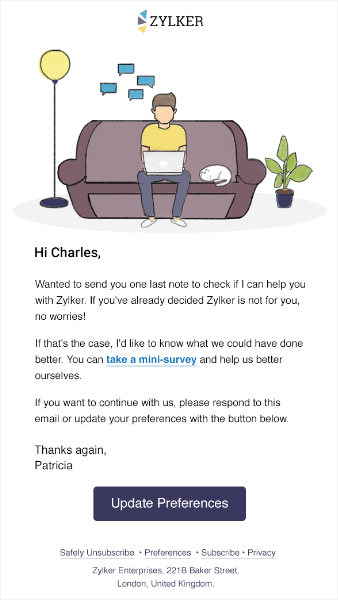
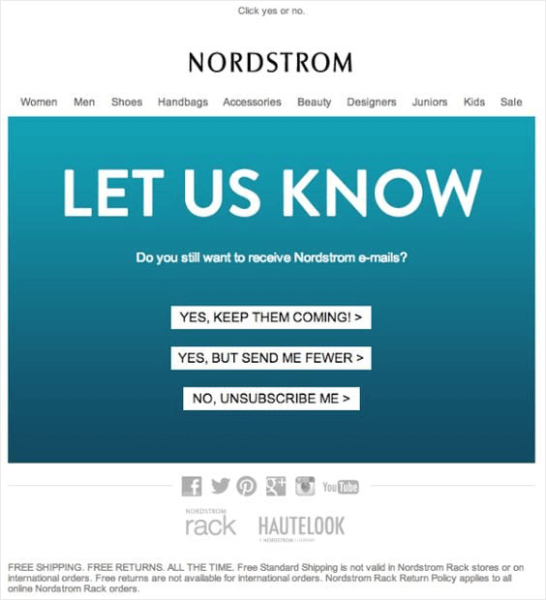
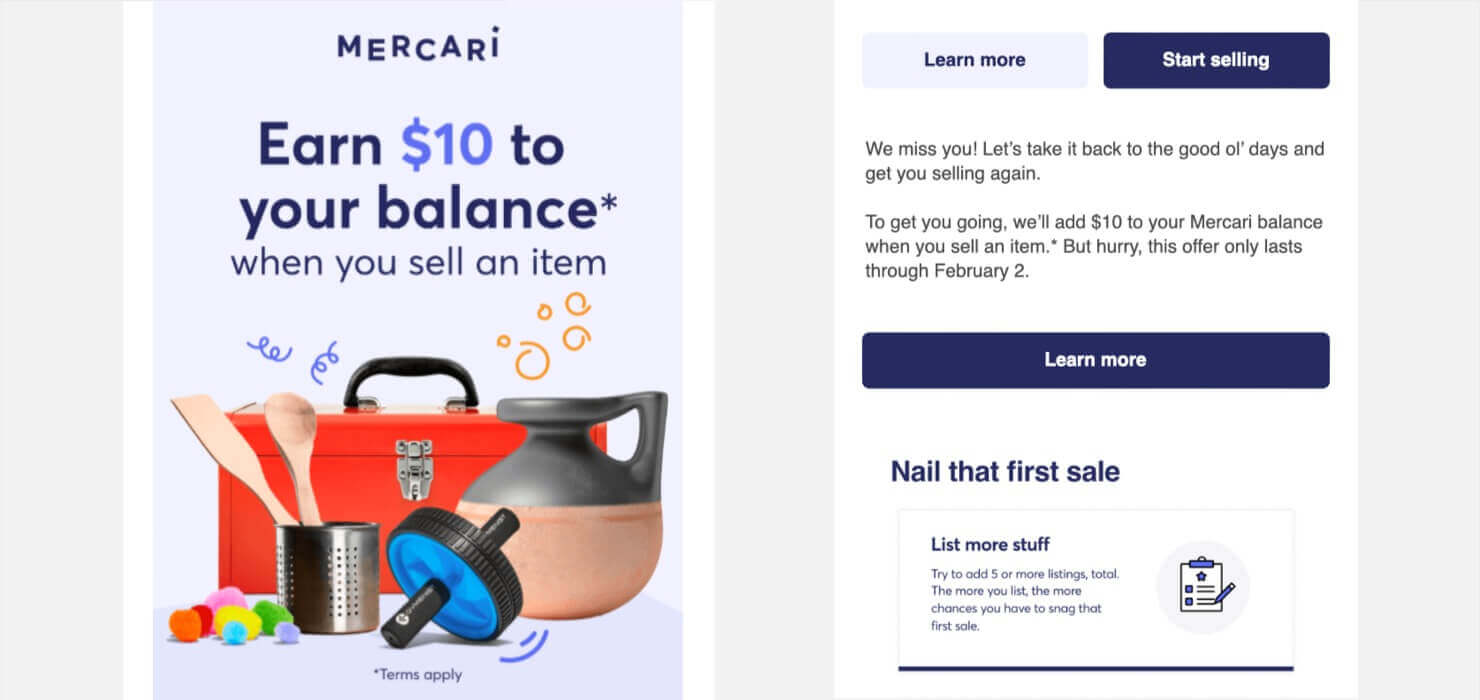

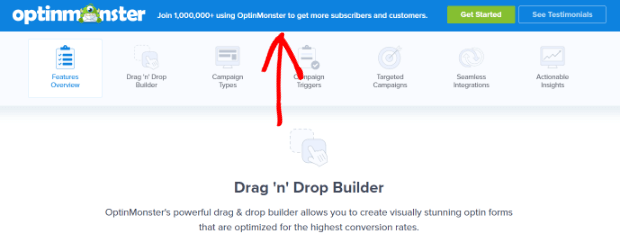
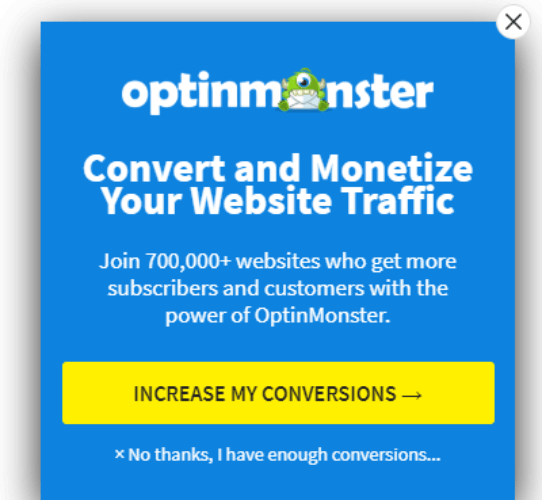








Add a Comment